8 18
|
|
|
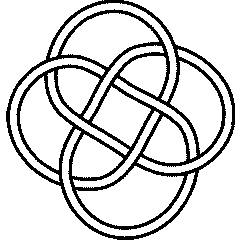
|
Visit 8 18's page at the Knot Server (KnotPlot driven, includes 3D interactive images!)
Visit 8 18's page at Knotilus! Visit 8 18's page at the original Knot Atlas! According to Mathematical Models by H. Martyn Cundy and A.P. Rollett, second edition, 1961 (Oxford University Press), p. 57, a flat ribbon or strip can be tightly folded into a heptagonal 8_18 knot (just as it can be tightly folded into a pentagonal trefoil knot). |
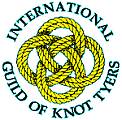 Logo of the International Guild of Knot Tyers [1] |
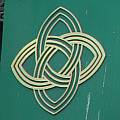 A charity logo in Porto [2] |
 A laser cut by Tom Longtin [3] |
||||
|
Knot presentations
| Planar diagram presentation | X6271 X8394 X16,11,1,12 X2,14,3,13 X4,15,5,16 X10,6,11,5 X12,7,13,8 X14,10,15,9 |
| Gauss code | 1, -4, 2, -5, 6, -1, 7, -2, 8, -6, 3, -7, 4, -8, 5, -3 |
| Dowker-Thistlethwaite code | 6 8 10 12 14 16 2 4 |
| Conway Notation | [8*] |
Three dimensional invariants
|
Four dimensional invariants
|
Polynomial invariants
A1 Invariants.
| Weight | Invariant |
|---|---|
| 1 | |
| 2 | |
| 3 | |
| 4 | |
| 5 | |
| 6 |
A2 Invariants.
| Weight | Invariant |
|---|---|
| 1,0 | |
| 1,1 | |
| 2,0 |
A3 Invariants.
| Weight | Invariant |
|---|---|
| 0,1,0 | |
| 1,0,0 | |
| 1,0,1 |
A4 Invariants.
| Weight | Invariant |
|---|---|
| 0,1,0,0 | |
| 1,0,0,0 |
B2 Invariants.
| Weight | Invariant |
|---|---|
| 0,1 | |
| 1,0 |
D4 Invariants.
| Weight | Invariant |
|---|---|
| 1,0,0,0 |
G2 Invariants.
| Weight | Invariant |
|---|---|
| 1,0 |
.
KnotTheory`, as shown in the (simulated) Mathematica session below. Your input (in red) is realistic; all else should have the same content as in a real mathematica session, but with different formatting. This Mathematica session is also available (albeit only for the knot 5_2) as the notebook PolynomialInvariantsSession.nb.
(The path below may be different on your system, and possibly also the KnotTheory` date)
In[1]:=
|
AppendTo[$Path, "C:/drorbn/projects/KAtlas/"];
<< KnotTheory`
|
Loading KnotTheory` version of August 31, 2006, 11:25:27.5625.
|
In[3]:=
|
K = Knot["8 18"];
|
In[4]:=
|
Alexander[K][t]
|
KnotTheory::loading: Loading precomputed data in PD4Knots`.
|
Out[4]=
|
In[5]:=
|
Conway[K][z]
|
Out[5]=
|
In[6]:=
|
Alexander[K, 2][t]
|
KnotTheory::credits: The program Alexander[K, r] to compute Alexander ideals was written by Jana Archibald at the University of Toronto in the summer of 2005.
|
Out[6]=
|
In[7]:=
|
{KnotDet[K], KnotSignature[K]}
|
Out[7]=
|
{ 45, 0 } |
In[8]:=
|
Jones[K][q]
|
KnotTheory::loading: Loading precomputed data in Jones4Knots`.
|
Out[8]=
|
In[9]:=
|
HOMFLYPT[K][a, z]
|
KnotTheory::credits: The HOMFLYPT program was written by Scott Morrison.
|
Out[9]=
|
In[10]:=
|
Kauffman[K][a, z]
|
KnotTheory::loading: Loading precomputed data in Kauffman4Knots`.
|
Out[10]=
|
Vassiliev invariants
| V2 and V3: | (1, 0) |
| V2,1 through V6,9: |
|
V2,1 through V6,9 were provided by Petr Dunin-Barkowski <barkovs@itep.ru>, Andrey Smirnov <asmirnov@itep.ru>, and Alexei Sleptsov <sleptsov@itep.ru> and uploaded on October 2010 by User:Drorbn. Note that they are normalized differently than V2 and V3.
Khovanov Homology
| The coefficients of the monomials are shown, along with their alternating sums (fixed , alternation over ). The squares with yellow highlighting are those on the "critical diagonals", where or , where 0 is the signature of 8 18. Nonzero entries off the critical diagonals (if any exist) are highlighted in red. |
|
| Integral Khovanov Homology
(db, data source) |
|
Computer Talk
Much of the above data can be recomputed by Mathematica using the package KnotTheory`. See A Sample KnotTheory` Session.
In[1]:= |
<< KnotTheory` |
Loading KnotTheory` (version of August 17, 2005, 14:44:34)... | |
In[2]:= | Crossings[Knot[8, 18]] |
Out[2]= | 8 |
In[3]:= | PD[Knot[8, 18]] |
Out[3]= | PD[X[6, 2, 7, 1], X[8, 3, 9, 4], X[16, 11, 1, 12], X[2, 14, 3, 13], X[4, 15, 5, 16], X[10, 6, 11, 5], X[12, 7, 13, 8], X[14, 10, 15, 9]] |
In[4]:= | GaussCode[Knot[8, 18]] |
Out[4]= | GaussCode[1, -4, 2, -5, 6, -1, 7, -2, 8, -6, 3, -7, 4, -8, 5, -3] |
In[5]:= | BR[Knot[8, 18]] |
Out[5]= | BR[3, {-1, 2, -1, 2, -1, 2, -1, 2}] |
In[6]:= | alex = Alexander[Knot[8, 18]][t] |
Out[6]= | -3 5 10 2 3 |
In[7]:= | Conway[Knot[8, 18]][z] |
Out[7]= | 2 4 6 1 + z - z - z |
In[8]:= | Select[AllKnots[], (alex === Alexander[#][t])&] |
Out[8]= | {Knot[8, 18], Knot[9, 24], Knot[11, NonAlternating, 85],
Knot[11, NonAlternating, 164]} |
In[9]:= | {KnotDet[Knot[8, 18]], KnotSignature[Knot[8, 18]]} |
Out[9]= | {45, 0} |
In[10]:= | J=Jones[Knot[8, 18]][q] |
Out[10]= | -4 4 6 7 2 3 4 |
In[11]:= | Select[AllKnots[], (J === Jones[#][q] || (J /. q-> 1/q) === Jones[#][q])&] |
Out[11]= | {Knot[8, 18]} |
In[12]:= | A2Invariant[Knot[8, 18]][q] |
Out[12]= | -12 2 -6 -4 4 2 4 6 10 12 |
In[13]:= | Kauffman[Knot[8, 18]][a, z] |
Out[13]= | 2 3 3-2 2 z 2 3 z 2 2 4 z 9 z 3 |
In[14]:= | {Vassiliev[2][Knot[8, 18]], Vassiliev[3][Knot[8, 18]]} |
Out[14]= | {0, 0} |
In[15]:= | Kh[Knot[8, 18]][q, t] |
Out[15]= | 5 1 3 1 3 3 4 3 |
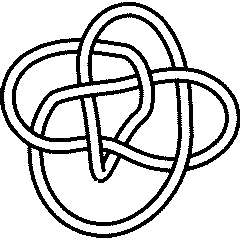

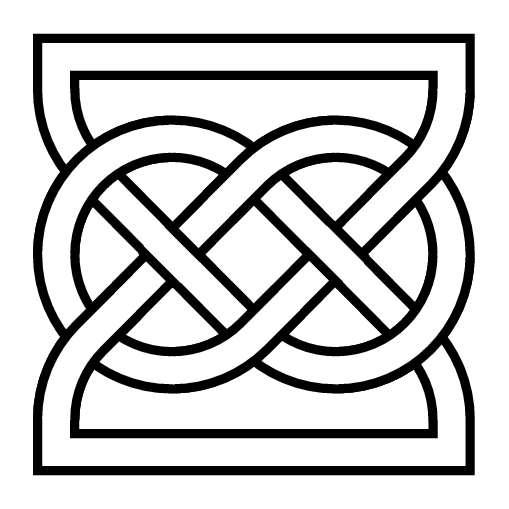
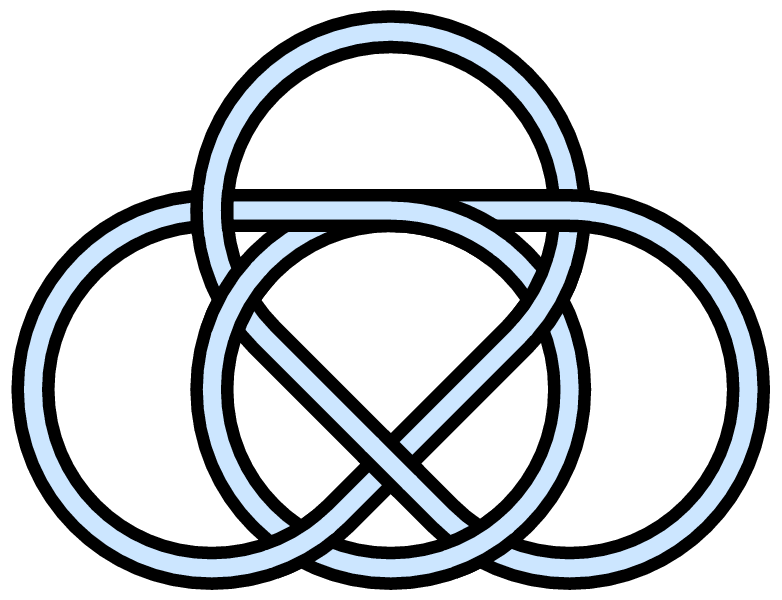
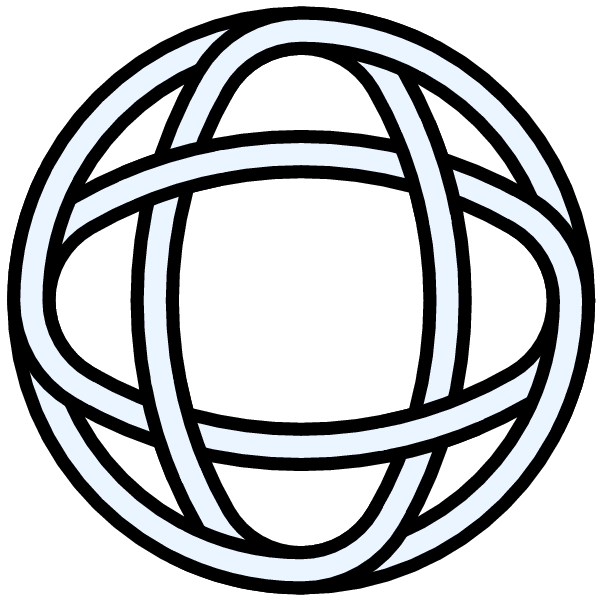
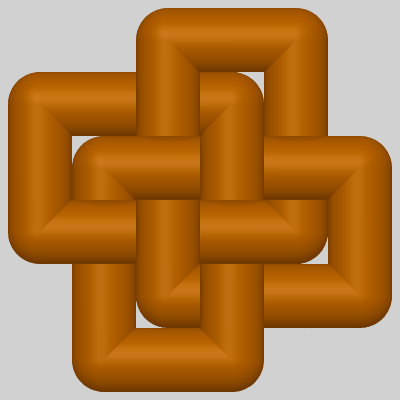

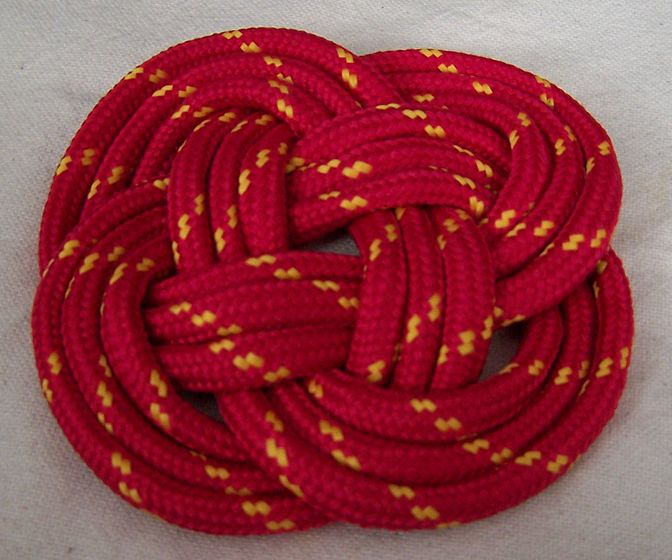
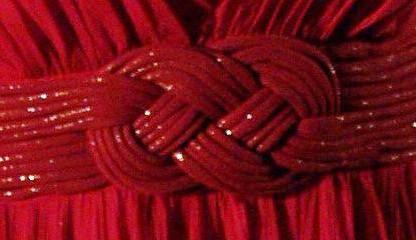
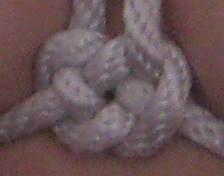
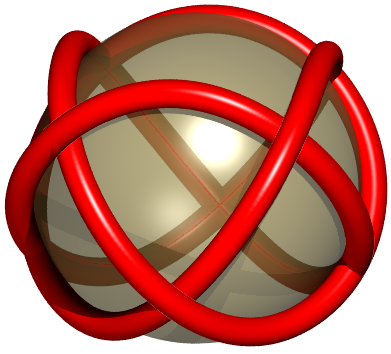


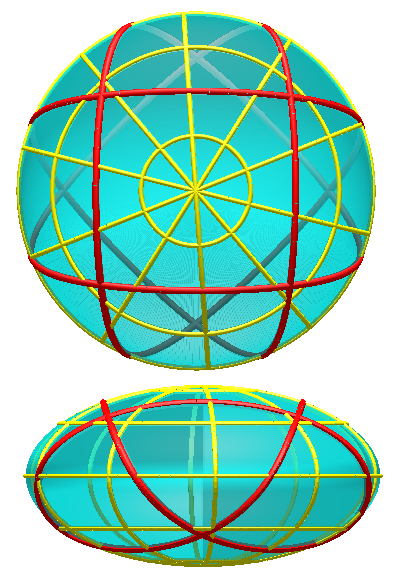


![{\displaystyle [1,3]}](https://wikimedia.org/api/rest_v1/media/math/render/svg/e0fcfee68a647afbfbe0440e15fc9fd260abbdc7)



































































